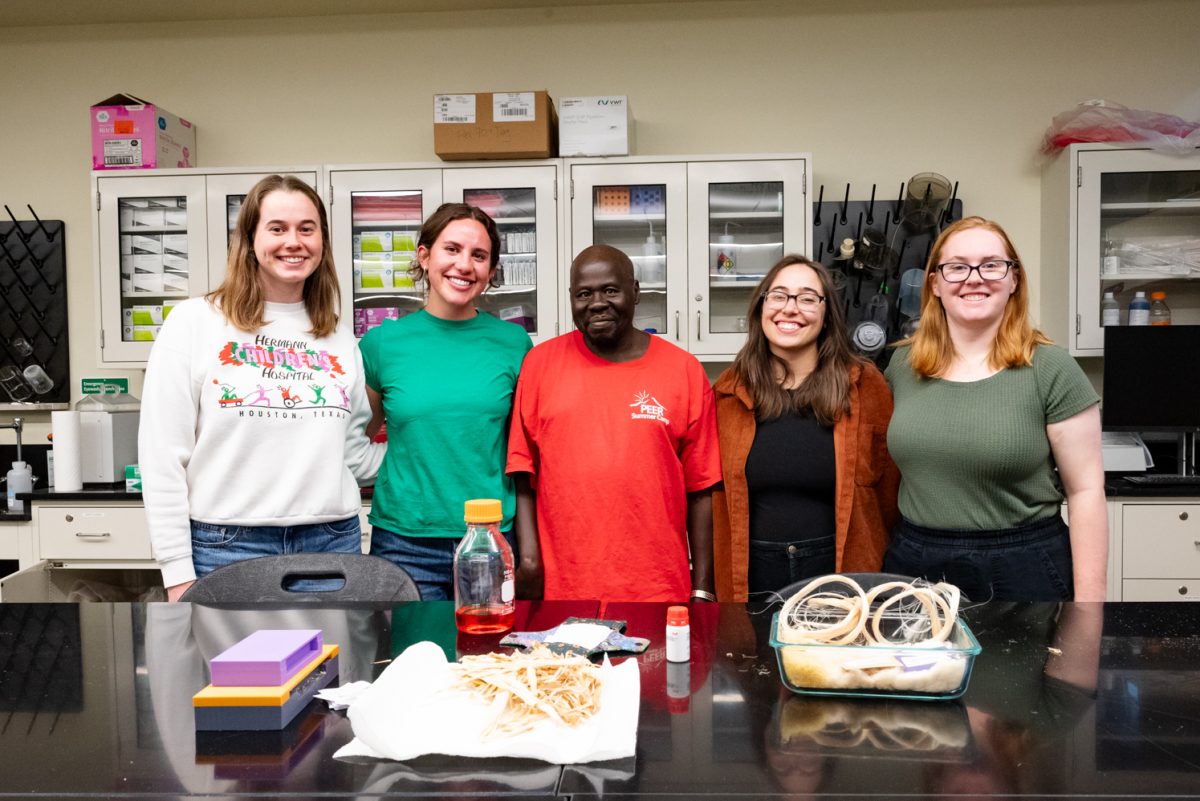
With Colorado State University being a top research university, it is no surprise a group has taken on investigating one of the hottest topics in the scientific community: the Clustered Regularly Interspaced Short Palindromic Repeats (CRISPR) mechanism.
The CRISPR mechanism is a gene-editing mechanism with the ability to locate and cut specific parts of the genome and replace DNA sequences with other sequences.
The research began in a year ago when Christie Mayo, an assistant professor in the Microbiology, Immunology and Pathology department; Mark Stenglein, another assistant professor in the Microbiology, Immunology and Pathology department; and Justin Lee, a research scientist working with Next Generation DNA Sequencing (NGS) collaborated to use NGS for diagnostics.
Although the research is not ready for publication, researching the CRISPR mechanism with NGS has the potential to enhance veterinary diagnostics and animal health disease surveillance and monitoring to identify previously characterized and novel pathogens.
“We’re searching for a needle in a haystack by eliminating the hay to search for the needle,” Mayo said. “In diagnostics, it’s not just time and money, but actual life. If we spend too much time looking at the hay, we won’t see what’s causing the problem.”
The CRISPR mechanism, which contains a Cas protein, is part of the immune system of prokaryotic cells, where it functions by removing incoming viral or foreign DNA in a sequence specific manner. The Cas protein has two main functions: DNA locating and cleaving, or cutting target DNA in natural and artificial CRISPR and Cas systems.
“This is a fundamental and groundbreaking discovery,” Lee said. “We only know a small amount of what (CRISPR and Cas systems) can actually do. It can be modified, transformed and adapted to a lot of different systems.”
The CRISPR mechanism was originally found in bacteria as a defense mechanism. Viruses would invade a bacteria cell, and the Cas protein would take parts of the virus DNA and insert it into the bacteria’s genome to store a portion of the virus DNA. Then, if the virus ever attacked the bacteria again, the bacteria would recognize the virus and stop the virus from attacking.
“What’s cool about the CRISPR mechanism is that it started out as an obscure bacteria defense mechanism, and within the past five to ten years, it’s become really useful in the lab,” Stenglein said. “In the past five to ten years, it’s been spreading to every area in medicine. The goal is to facilitate this technology into areas not being used, make it better and combine this technology in a way it hasn’t been combined before.”

The CRISPR mechanism is a hot topic in the scientific community today. Due to the CAS 9 protein’s ability to locate and eliminate parts of a DNA sequence, scientists have discovered the possibility of gene editing, or replacing DNA sequences with other DNA sequences to change the genome. Although not in practice yet, the possibility of being able to create a “designer baby” has emerged, causing an ethical debate.
“(The CRIPSR mechanisms’ gene editing capabilities is) a very gray area,” Lee said. “I think it’s still a ways off, but now is the time to be having these discussions. It’s good for the public and people who deal with ethics to deal with this, and scientists should be a part of the conversation.”
Collegian reporter Julia Trowbridge can be reached at news@collegian.com or on Twitter @chapin_jules.







